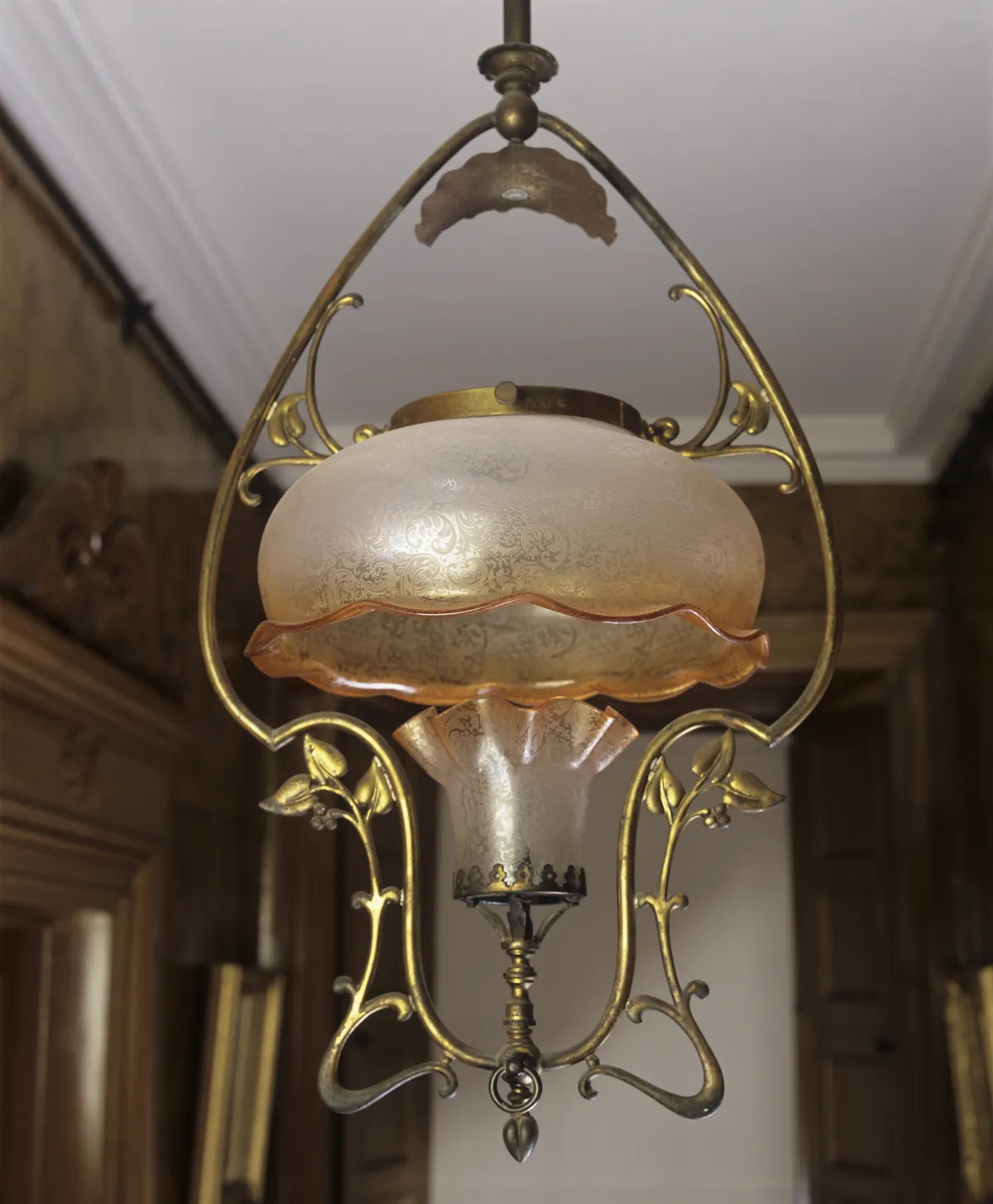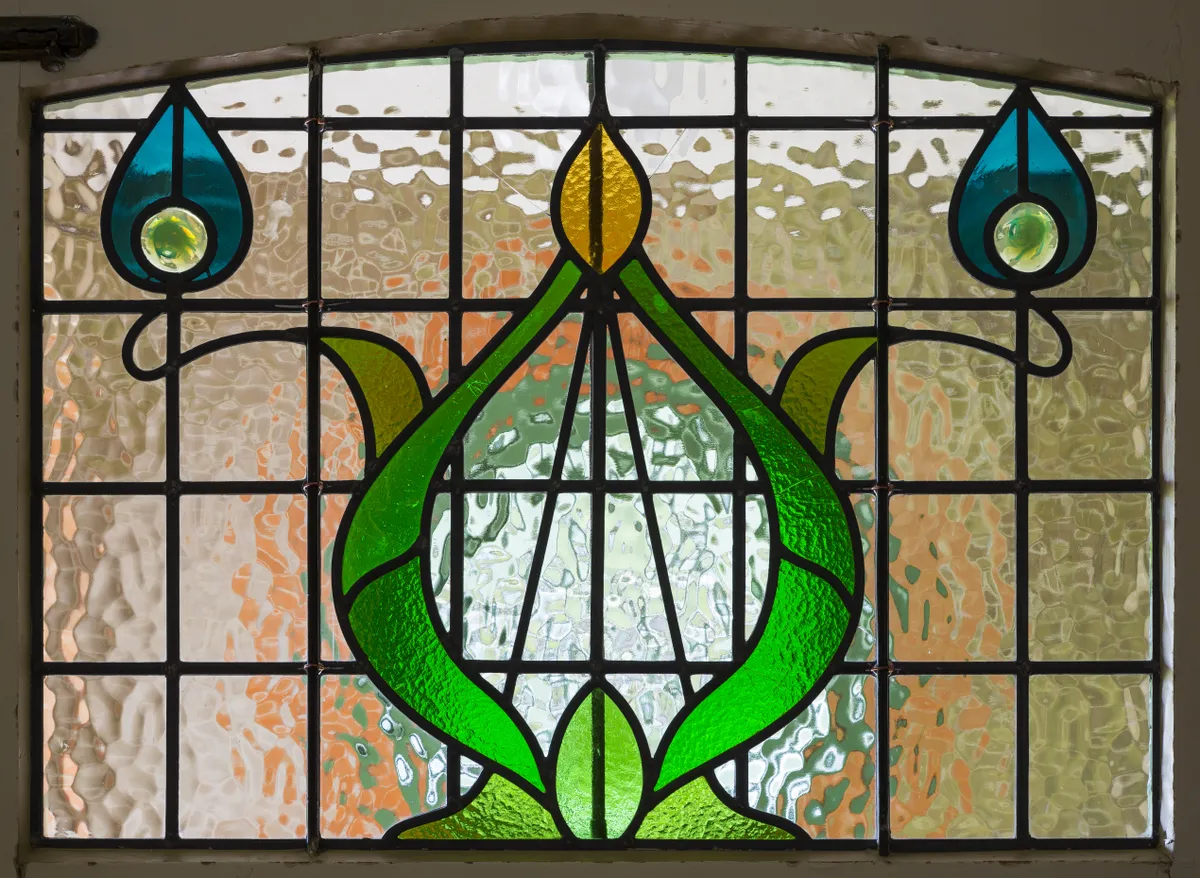When we hear the words art nouveau(new art), most of us picture the beautiful dreamy maidens and botanical embellishments on the paintings and posters produced by Czech designer Alphonse Mucha in Paris, or the colourful leaded glass table lamps made by Louis Comfort Tiffany’s firm. If we take a closer look at the world of design in the late 1800s and early 1900s, however, it soonbecomes clear that these iconic examples are merely the tip of the iceberg. The turn of the century was a period of unrivalled creativity, when a new international art and design movement emerged – a fusion of many threads, voices, styles and ideas, all influencing one another.
Want to learn more about the history of art but not sure where to start? We've made a list of the best art history and appreciation courses and lectures available online.
An Organic Evolution
‘At the beginning of the 20th century there was a cultural moment when people began to search for some kind of new expression,’ says Dr Robyne Calvert, Mackintosh Research Fellow at The Glasgow School of Art. ‘Although art nouveau was referred to in French and Belgian artistic journals from the late 1870s, the term was notpopularised until 1895, when German art dealer Siegfried Bing opened his gallery Maison de l’Art Nouveau in Paris.’ The art nouveau movement gathered pace following the groundbreaking exhibition Exposition Universelle, Paris, in 1900, which featured paintings, sculptures, ceramics and architecture in this modern, exciting style. The exhibition was a crowning moment for master jeweller René Lalique, who dazzled the crowds with his intricate, beautifully wrought pieces,displayed on a stand resplendent with curving, bronze figures. ‘Art nouveau didn’t just come out of nowhere,’ explains Robyne. ‘In Britain, artists, architects and designers were looking to preceding movements, such as Pre-Raphaelitism and Aestheticism. Using organic forms as a basis for design emerged out of the Arts and Crafts movement, taking inspiration from the likes of John Ruskin and William Morris.’ A Victorian sourcebook called The Grammar of Ornament: A Visual Reference of Form and Colour in Architecture and the Decorative Arts (published in 1856 by Owen Jones) was still makingwaves on the design scene at this time, too. ‘It was a pattern guide to ornamentation from all over the world, looking at natural themes from Middle Eastern countries, Japan, China and Morocco,’ reveals Robyne. ‘In the run-up to the art nouveau era, many designers responded to that.’

The Universal Appeal of Nature
While interpretations of art nouveau did differ slightly from designer to designer and country to country, the basic philosophy was the same for all: nature was the source of inspiration. As a result, the art nouveau ‘look’ typically featured sinuous lines, flowing organic shapes based on botanical forms, natural colours such as peacock-blue, earth-brown or sage-green, decorative fora and fauna – such as water lilies, dragonflies and birds – and ornate ‘whiplash’ curves. Designers at this time were brave and often broke new ground. For example, ceramicist-cum-pharmacist Ernest Bussière experimented with chemicals to create new textures and glazes on his vases. Shapes in graphics, ceramics, sculptures, buildings, metalware and furniture designs tended to be organic, while simultaneously very stylised.
What’s interesting about art nouveau is that other countries gave it different names, but they were all strands of the same movement
‘The Germans called it Jugendstil (Youth Style), while the Austrians called it Sezessionstil, because it was popularised by the artists of the Vienna Secession art movement (formed in 1897 and led by Gustav Klimt). In Italy, it was referred to as Stile Liberty.’ While some suggest this is because it was inspired by English department store Liberty of London, others, including Robyne, think the Italian term probably has more to do with freedom. Whatever the source of this phrase, there’s no doubt that Arthur Lasenby Liberty’s store was a key champion of art nouveau design, employing the likes of Archibald Knox and Jessie M King to design a pioneering range of metalware pieces, including nostalgic Cymric (Celtic Revival) designs. ‘At this time, many countries were coming into their own, searching for their romanticised pasts to draw upon,’ says Robyne.Liberty had contacts in many major cities, so the British ‘take’ on art nouveau – heavily influenced by, and overlapping with, the Arts and Crafts movement – spread worldwide. Liberty’s products were written about in influential publications such as The Studio magazine and Der Moderne Stil and were bought by museum curators from Sweden to Vienna. ‘Fabrics at Liberty featured the flowing botanical forms common to art nouveau, but they seem a little more solid than in continentaldesigns and have strong Arts and Crafts and Japanese influences,’ says Anna Buruma, Liberty London’s in-house Archivist.

Scottish Leaders
‘Glasgow was particularly important for the development of design during the art nouveau era,’ says Robyne. ‘In 1900, Charles Rennie Mackintosh, his wife Margaret Macdonald Mackintosh and others from The Glasgow School of Art showed at theeighth Secession exhibition in Vienna. Mackintosh influenced the Secessionists.’ A couple of years later, in 1902, Mackintosh showed in a ‘Scottish Section’ at the International Exhibition of Modern Decorative Art in Turin, reaching an even larger audience. ‘International exhibitions were incredibly important at this time,’ explains Robyne. ‘They were the places where you could go and see what was new – in industry and in design and architecture. After exhibitions, new designs were writtenabout in international art magazines and periodicals, so the reach was huge.’ Unlike the flowing, ornate designs of most art nouveau artists and architects, Mackintosh’s work featured bold, geometric shapes and basic forms alongside the more organic motifs. His innovative furniture, stained glass, architecture and interior decoration designs elevated Mackintosh to a unique position. ‘In many ways, he was ahead of his time. Some of his work is a bit like the much later art deco style,’ says Robyne. ‘For example, his bold, geometric, black-and-yellow interior scheme at 78 Derngate in Northampton.’ When the First World War broke out, art nouveau faded fast. This highly decorative, celebratory style was suddenly completely out of step with the international mood. ‘There is a vitality to art nouveau,’ says Robyne. ‘War was huge and horrible and had a tremendous impact on any kind of creative or artistic movement – especially one that was a celebration of life. People weren’t feeling overly positive, so it’s difficult for anything to flourish at a moment like that. Also, during the First World War, resources were scarce.Nobody was going to go aroundgilding everything.’

Nouveau Antiques
Today, the market for art nouveau antiques is alive and well. Dealer Gavin Morgan, of Morgan Strickland Decorative Arts, says part of the appeal is the vast array of styles within the art nouveau bracket: ‘There’s something for everyone, from the restrainedgeometry of the Austrian Secession and Mackintosh to the full-blown, over-the-top French pieces,’ he explains. Art nouveau pieces command a huge range of prices, too. ‘Metalware figures in pewter orsilver-plate by German firmWMF are highly collectable because they were made in reasonably large numbers, so they’re not prohibitively expensive,’ explains Gavin.At the other end of the scale,items by Hector Guimard (who designed the sinuous, stylised ironwork Paris Métro station entrances) or Tiffany lamps can fetch huge sums. ‘With Tiffany lamps, the sky is pretty much the limit,’ says Gavin. ‘For the most average of lamps, you’re looking at in excess of £10,000 and rare examples can go for hundreds of thousands.’ The most valuable Tiffany lamp ever sold reached $2.8m at a Christie’s auction in 1998. So, in essence, what is it that makes art nouveau such an enduringly appealing style? ‘At its best, art nouveau is pure perfection of proportion and form,’ believes Gavin. ‘You really don’t get much better than that.’
The best places to see art nouveau
1
THE PARIS MÉTRO, PARIS
Hector Guimard designed ornate entrances to 141 Paris Métro stations. Using green ironwork and curvaceous plant-like designs, highlights includePorte Dauphine, Abbesses (pictured) and Crimée stations. ratp.fr/en
2
THE GLASGOW SCHOOL OF ART, GLASGOW
Charles Rennie Mackintosh’s largest commission, this building was constructed in two phases (1899 and 1909) and reflects the early and mature design talents of Mackintosh. Architectural Historian Dr Jonathan Foyle has likened the building to ‘a great ocean liner’. gsa.ac.uk
3
MUSÉE CARNAVALET, PARIS
Head here to see the interior of Georges Fouquet’s ornatejewellery shop (formerly at 6 Rue Royale), designed by Alphonse Mucha. ‘Nature, I study it constantly, there is not a plant, a flower, a bit of life that is not full of suggestion,’ wrote Alphonse. carnavalet.paris.fr (NB museum closed until 2019)
4
VICTORIA AND ALBERT MUSEUM, LONDON
From advertising posters by Alphonse Mucha to elegantfurniture by the likes ofLouis Majorelle and Hector Guimard, there’s an impressive collection of art nouveau designs to explore here. vam.ac.uk
5
78 DERNGATE, NORTHAMPTON
Designed and remodelled by Mackintosh in 1916 for his client, Northampton model engineer WJ Bassett-Lowke,this small terraced house hada visionary owner and underwent a radical transformation. 78derngate.org.uk